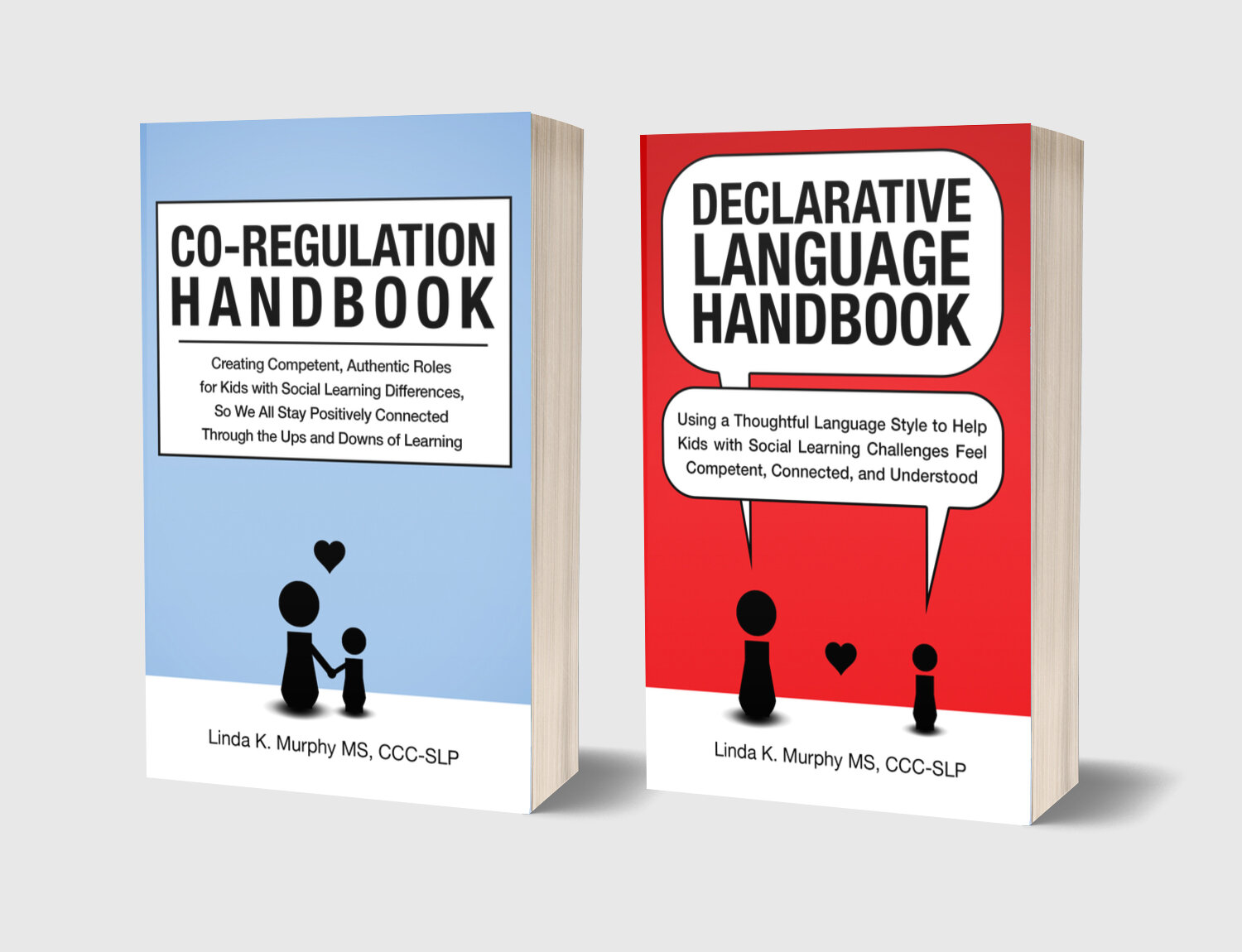Flourish with Your Complex Child
Curated resources for the October 2024 Summit
Beginning Handouts on Declarative Language & Co-Regulation
-

Guiding Principles When Using Declarative Language & Co-Regulation
Whether these tools are new ideas to you, or you’ve been using them for a while, these guiding principles can help us all stay on track as we strive to create learning environments that support growth and positive engagement for individuals of all ages.
-

Declarative Language Cheat Sheet
Ideas on the cheat sheet are language options! Pick and choose what is developmentally right for your learner, and a match for the situation at hand.
Declarative statements can be simple sentences, or more complex. They can be about the present, or about the past. We can use declarative language to celebrate, and we can use it to plan ahead.
There are so many ways to use DL, and as long as we use it with a “give over get” mindset, it will help us connect with each other, guide our learners in a positive way, and deepen our relationships.
-

Co-Regulation: Where Do I Start?
This idea is explained in Chapter 2 of Co-Regulation Handbook: What You Need to Know to Get Started Right Away. As we engage kids with co-regulation in mind, it leads to authentic social connection, communication that is mutually meaningful, and a greater understanding of each other and our world.
-

Declarative Statements When Emotions Are Escalating!
I know it can be helpful to have some go-to statements when emotions are rising! Once kids are regulated, you will have the opportunity to problem solve together. But, first things first. Importantly, remember that silence is JUST as important as your statements. Kids need time to process what you are saying.
-

One Exchange at a Time
If you are newer to co-regulation and declarative language or just now thinking about giving this new communication style a try, I want you to be successful! In this article, I outline 4 important tips to keep in mind when getting started.
-

Reframing Our Thinking of "Non-Preferred Tasks"
When we say a child “doesn’t engage in non-preferred tasks”, we are lumping many items into one bucket. And I don’t think this is helpful. Different things are helpful at different times, based on the task and based on the moment. Each opportunity or task that you want your child to engage in is unique and likely contains different demands.
It is important to consider each opportunity on its own and learn more about what the obstacle in that instance might be, so that we can figure out the best way to help.
-

Using Declarative Language for Varying Puposes and With Varying Levels of Directness
There are SO many ways to use Declarative Language. First and foremost, DL should be used to foster connection, support individuals in a respectful way, and invite partnership. Then, as you get comfortable, you can vary the level of directness and/or learning opportunities you invite based on the individual and based on the moment. See some examples on this handout!
